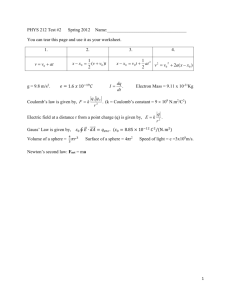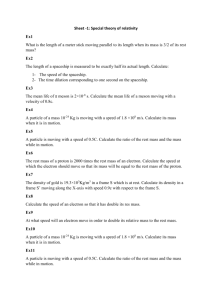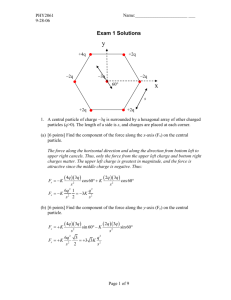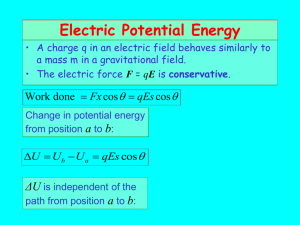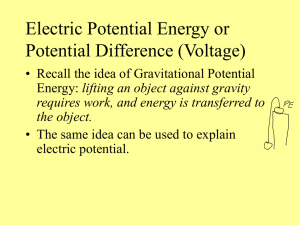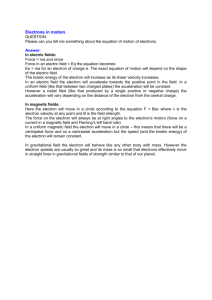We said last time that charged particles give rise to an electric
advertisement
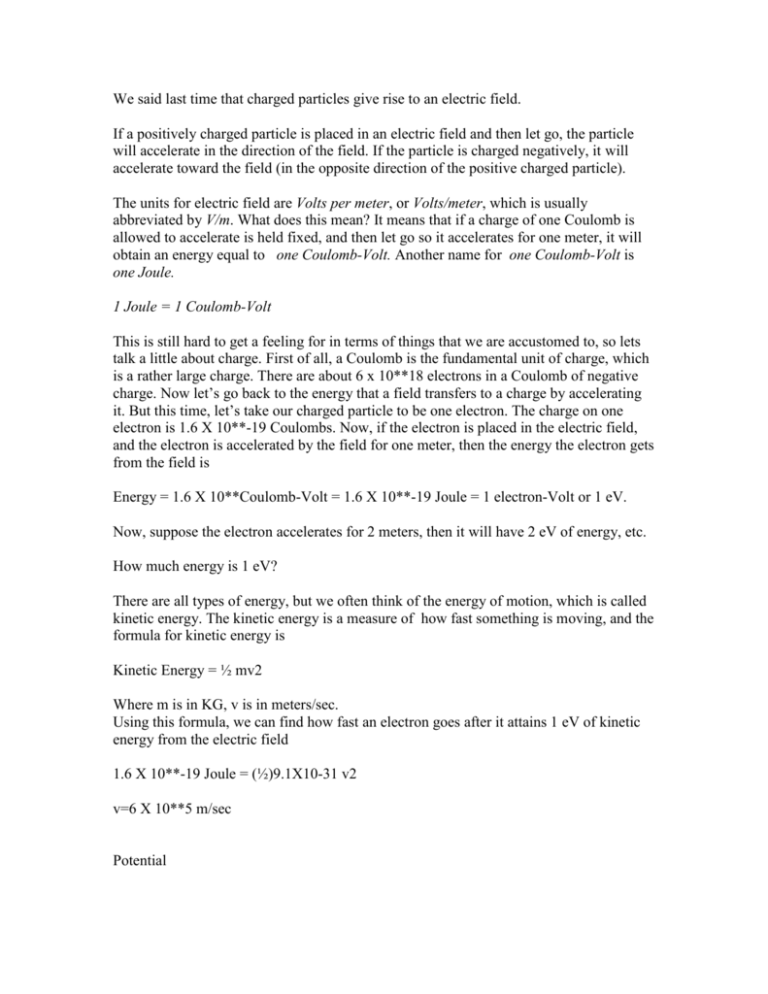
We said last time that charged particles give rise to an electric field. If a positively charged particle is placed in an electric field and then let go, the particle will accelerate in the direction of the field. If the particle is charged negatively, it will accelerate toward the field (in the opposite direction of the positive charged particle). The units for electric field are Volts per meter, or Volts/meter, which is usually abbreviated by V/m. What does this mean? It means that if a charge of one Coulomb is allowed to accelerate is held fixed, and then let go so it accelerates for one meter, it will obtain an energy equal to one Coulomb-Volt. Another name for one Coulomb-Volt is one Joule. 1 Joule = 1 Coulomb-Volt This is still hard to get a feeling for in terms of things that we are accustomed to, so lets talk a little about charge. First of all, a Coulomb is the fundamental unit of charge, which is a rather large charge. There are about 6 x 10**18 electrons in a Coulomb of negative charge. Now let’s go back to the energy that a field transfers to a charge by accelerating it. But this time, let’s take our charged particle to be one electron. The charge on one electron is 1.6 X 10**-19 Coulombs. Now, if the electron is placed in the electric field, and the electron is accelerated by the field for one meter, then the energy the electron gets from the field is Energy = 1.6 X 10**Coulomb-Volt = 1.6 X 10**-19 Joule = 1 electron-Volt or 1 eV. Now, suppose the electron accelerates for 2 meters, then it will have 2 eV of energy, etc. How much energy is 1 eV? There are all types of energy, but we often think of the energy of motion, which is called kinetic energy. The kinetic energy is a measure of how fast something is moving, and the formula for kinetic energy is Kinetic Energy = ½ mv2 Where m is in KG, v is in meters/sec. Using this formula, we can find how fast an electron goes after it attains 1 eV of kinetic energy from the electric field 1.6 X 10**-19 Joule = (½)9.1X10-31 v2 v=6 X 10**5 m/sec Potential This leads to the idea of potential energy and voltage. The potential energy is a measure of how fast the electron would go if we were to let is accelerate in the field, but have not done it yet. In other words, we say an electron has 1eV of potential energy, if we are holding it stationary at one an electric field of one V/m that has a spatial extent of one meter. Picture Other examples 2eV PE for field 2 V/m in one meter of extent. Etc. So, voltage is the ability to impart energy onto a charged particle, but it has not happened yet. Let’s go back to our electron.

